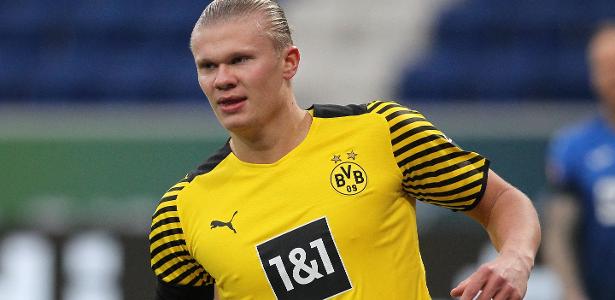New York Renaissance vs. Harlem Globetrotters. A rivalry that sounds like a Big Apple derby over who will sit on the orange ball throne. However, if the question of reign and power between the two teams with very different visions and trajectories does arise, this fight actually opposes a New York Black Five to another Chicagoan. It concerns African-American basketball during the first half of the twentieth century.
As the Harlem Globetrotters hype grows, there remains one daunting hurdle for Abe Saperstein’s men to overcome: the New York Renaissance who reign at the pinnacle of African-American basketball — and indeed the Orange Ball in general. A team very different from theirs in its vision carried by the owner Bob Douglas who refused to respond to the provocations of his counterpart until 1939.
“We want Rens”
That year, Abe Saperstein and his family surfed on success. Nothing seems to be able to stop them. Except for a small pebble that are the Rens. Those who continue to steal the spotlight but especially the hearts of African Americans. He therefore resumes his media company to attack his rival. It must be said that a victory over the Original Celtics a few months earlier boosted his confidence, if that was necessary. Although the men with clubs are no longer the dominant team of the late twenties and the beginning of the thirties, their name still weighs in the game and they remain references. So he writes a press release
We want the Rens
The Harlem Globetrotters, one of the best African-American basketball teams, are trying to obtain a meeting against the New York Renaissance, the world champions of colored basketball.
This time, the crime of lèse-majesté is not unpunished and Eric Illidge, the right arm of Bob Douglas responds curtly. The message is clear : the Rens regard the Harlem Globetrotters as clowns and they accept the challenge. They are ready to kick their ass, wherever they want, whenever they want. He points out in passing that Abe has already taken the liberty of saying that the men of Chicago have already beaten those of Harlem, which is false. If the words do not come directly from the mouth of Bob Douglas, there is no doubt that he still whispered them to his partner given the antagonism with Saperstein.
The ball is in the Globetrotters’ court. Suddenly they seem to have lost the telephone number of the press and of Douglas. Nothing moves. The fact that the Rens answered is enough for Saperstein, even if he takes a tackle in the process. It doesn’t matter how bad it may be, this publicity exists so we talk about him and his players. It’s all that matters. Despite pressure from African-American newspapers, no arrangement was made for a confrontation. The Rens then add fuel to the fire. They ask Saperstein to answer or else to shut up forever since he seems to be deflating.
The first showdown
It is finally from outside that the boost will come with the first edition of the World Pro Basketball Tournament, in 1939 in Chicago. Both teams are invited – the only Black Fives in the game – and are in the same draw. History of avoiding the shock in the final? Let’s not forget that we remain in a segregated America.
Inevitably, the hype rises within the African-American community, the rivalry is at the top. All that remains is to play the match. Good ok, to also beat the first opponents proposed to the two teams so that the confrontation does indeed take place. Not a problem, the Rens won 30-21 for their entry into the running against the New York Yankees. While the Trotters – who must go one more round – have two successes, 41-33 over the Fort Wayne Harvesters and 41-33 against the Chicago All-Americans.
Here it is. The moment of truth arrived, March 27. Bob Douglas, yet rarely present when his family play away from Harlem, is there, at the Chicago Coliseum. Just like the white press, which until then made fun of the tournament as well as the rivalry between the two Black Fives – or anything related to African-Americans in general – and which is beginning to take the measure of the shock. The experience is on the side of the New York Renaissance, but the Harlem Globetrotters do not intend to miss the opportunity.
Too bad, an 8-1 entry in favor of the New Yorkers almost seals the outcome of the match. Admittedly, the men of Saperstein manage a run at the end of the meeting to get closer, taking advantage of a slight relaxation of the opponent. But in the final moments, Tarzan Cooper closes the proceedings for a 27-23 victory for the Rens. Much to the delight of the crowd made up mostly of African Americans. Proof that within the community, the heart still leans for Bob Douglas and his family, even in Illinois. As they also won the final in stride, Abe Saperstein will have to postpone his dream of dethroning them. Not sure that the encouragement on the quality of the game of the Globetrotters is enough to console the players. They do not know if they will have a new opportunity. Worse, they have to ruminate on this defeat for long weeks, their season having ended after the tournament.
The payback
Reluctant to be walked on, Abe Saperstein takes action to reverse the course of history. Aware of the limits of his workforce compared to that of the larger, stronger, more solid Douglas, he set out to alter it, if necessary in depth. First of all by trying to attract Rens players to his Black Fives by offering them bigger contracts. In vain. We must then look to other solutions. It is towards the West of the country that he turns, far from the influence of his rival.
The overhaul is underway and the following season confirms the rise of this new generation. Harlem Globetrotters on a mission who leave aside the gags and sketches to stick jerks and prepare as well as possible for a possible confrontation to come against their rivals. A Daft Punk version: better, faster, stronger who will have the right to fight for his revenge. Also at the World Pro Basketball Tournament, in March 1940.
For the second edition of the tournament, the two teams meet in the quarter-finals. The Rens attack once again with their feet to the ground to take off, but this time the GlobeTrotters quickly return to the game. The match is much tighter than the first set and is played in the last moments to turn in favor of Abe Saperstein’s men. A victory that should have earned them the title, but as in the first edition, the organizers took good care to avoid that the final could oppose the two Black Fives, regardless of whether they were the two best teams in the running. .
The Globetrotters still have to whip. With weight support. Because if Douglas and Saperstein cannot especially frame themselves, the players, them, devote themselves an immense respect. So much so that during the final, the Rens are in the front row to encourage their rivals. They lost their title, but does it really matter if it’s other African Americans who pick up the torch? They are also present to celebrate the success of the Trotters during the festivities organized in Bronzeville.
A transfer of power
It is now the turn of the Rens to seek to replay the Trotters. Eric Illidge regularly calls for a beauty. For him, the Globetrotters had luck. The New York Renaissance played their worst game in years, and yet the gap is only one point. A request that remains a dead letter, the two Black Fives no longer clash for several years. If the men of Douglas maintain a good level, they are now overtaken by the popularity of their rivals. The curves are reversed, decline for the Harlem team, explosion for that of Chicago. The dynamics are reversed.
While the Globetrotters surf on their success, the Renaissance begin their decline. Less prepared to crisscross the small towns of the Midwest, less anchored far from NY and the East, therefore in difficulty to bring in money during the Second World War, they see their rivals gaining momentum. The Trotters have found their niche, which they have known and mastered for years now.
The last confrontation between the two Black Fives takes place once again during a World Pro Basketball Tournament, that of 1944. The two teams are knocked out in the semi-finals and therefore compete for third place. The Trotters win to leave a 2-1 mark in their favor against Rens in the history books.
After the world conflict – much better managed by the Trotters – the gap is even greater. The best African Americans favor Saperstein’s team, regardless of their geographic location. Slowly but surely, the Rens disappear from the map, in favor of the men of the Globetrotters whose influence and media coverage continues to grow.
Worse, in 1949: Douglas rents the Rens to Saperstein for the warm-ups of the Trotters, symbol of the opposite trajectories. Two years later, he regained control of his team to go on tour again. But fame and glory are now far away. The Globetrotters even more, their playground becoming the whole world. They are the winners of this rivalry from a media point of view, the New York Renaissance being often forgotten in the history of the orange ball.
–


